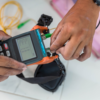
When working with fiber optic cables, one critical but often overlooked factor is the bending radius. Misunderstanding or ignoring it can lead to signal degradation, physical damage, and long-term reliability issues. In this article, we explain what bending radius is, why it matters, and how to handle fiber cables correctly during installation.
What Is Bending Radius?
The bending radius refers to the minimum curve a fiber optic cable can bend without causing performance loss or damage. It is usually defined in two ways:
- Static Bending Radius: The minimum radius when the cable is at rest.
- Dynamic Bending Radius: The minimum radius while the cable is being pulled or installed.
A general rule of thumb:
- Static: 10x the outer cable diameter
- Dynamic: 15x the outer cable diameter
Always consult the specific cable’s datasheet, as exact values vary by manufacturer and cable type.
Why It Matters
1. Signal Integrity
Tight bends can cause macrobending losses, where light leaks from the fiber core, resulting in attenuation and reduced transmission quality.
2. Physical Damage
Fibers are made of glass. Bending them beyond limits can cause internal cracks or fractures, even if the cable looks fine externally.
3. Network Reliability
Bending stress can cause long-term damage that only appears later — often under load or environmental changes.
4. Compliance with Standards
Installation guidelines such as TIA-568 and EN50173 include strict requirements for bend radius. Non-compliance may lead to failed certifications or voided warranties.
Tips for Proper Cable Handling
- Use wide-radius corners or cable trays to manage turns.
- Avoid zip ties or tight bundling that compress the cable jacket.
- Never force cables into small enclosures or sharp turns.
- Consider bend-insensitive fiber for tight-space environments.
Common Applications That Require Care
- Data centers with tight routing paths
- FTTH (Fiber to the Home) installations
- Optical patch panels and distribution boxes
- Splice closures and wall-mounted fiber enclosures
Respecting the bending radius isn’t just best practice—it’s essential for performance, reliability, and safety. Whether you’re handling patch cords, indoor drop cables, or trunk lines, applying the correct bend radius ensures your fiber installation will function as intended for years to come.



















